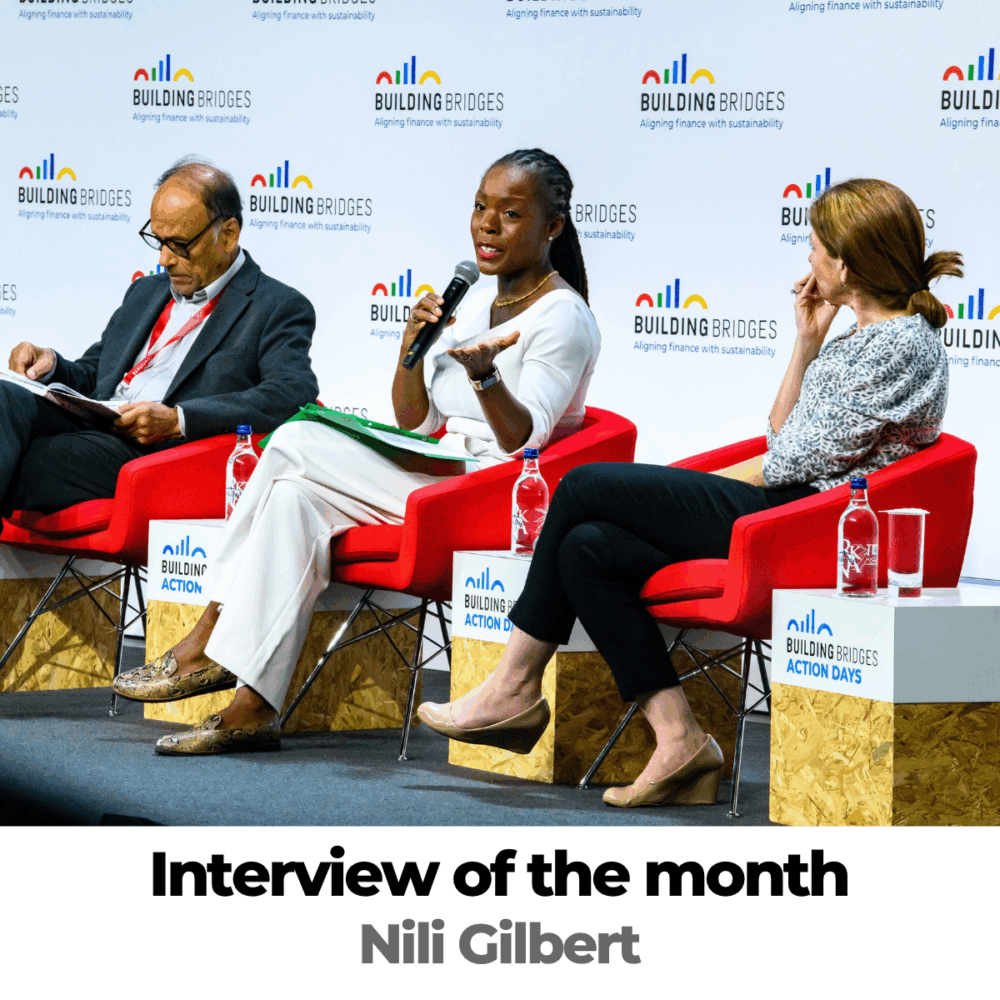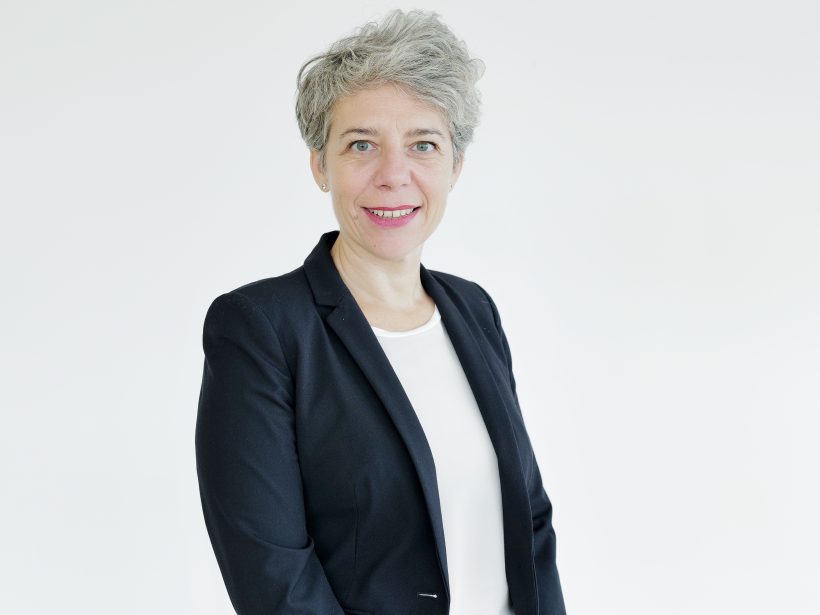
Interview of the month: Nili Gilbert
This month, we spoke with the Vice-Chairwoman of Carbon Direct about why science-based finance is essential to achieving net zero. In this interview, she shares how her decades of experience leading Rockefeller family investment committees led her to focus entirely on climate and why financing the “new economy” is just as critical as managing down the old one. She also breaks down the four types of capital needed for the transition, from fully green assets to managed phase-out and climate solutions and highlights the major underinvestment in hard-to-abate sectors and the Global South. Finally, she explains how Carbon Direct is scaling high-integrity decarbonisation and carbon removal, and why multidisciplinary collaboration remains the strongest driver of progress in a turbulent world.
You’ve had a career that has evolved from being a co-founder of a large, women-owned asset management firm to your current role at Carbon Direct. Could you share some of the pivotal moments that led you to shift your focus toward science-based, purpose-driven finance? What was the “a-ha” moment when you realized the potential of finance to drive real social and environmental impact?
My background has been over 20 years in institutional investment. Since 2006, I have chaired one or more Rockefeller family investment committees – today I chair two and advise a third. With the Rockefeller family, we’ve been working for many decades on mission driven investing and sustainability. In 2019, all the Rockefeller funds that I oversee committed to net zero together. However, we quickly realized that we couldn’t just protect our own portfolios and investment returns from climate risk without the climate challenge itself being addressed.
So, I became fascinated with the massive scale of change necessary to manage global warming, realizing that the path ahead of us requires decarbonizing the whole global economy. This means that every country and every company must evolve. Our systems of production and the whole global supply chain are now shifting towards cleaner, emissions-free processes.
These insights are inspiring to me as a caring human being, but also as a businesswoman and investor – and this is what has led me to focus my life’s work exclusively on climate and net zero.
As I have come to understand private sector net zero planning frameworks more deeply, a burning question always nags at me: A lot of time and energy goes into managing the old economy out of its current state – and yes, and that is important – but we also need to focus on investing in the new economy that’s going to replace it: Not just what we are leaving behind, but what we are transitioning towards, and how will we build it?
These insights are what inspired me to become the Vice Chairwoman of Carbon Direct. The company has two separately held businesses: One which advises and helps companies and other institutions to implement their decarbonization plans, and one which is an asset manager investing in climate solutions to manage emissions. Carbon Direct is deeply focused on action and impact – whether it’s solutions to remove or emissions, to recycle them into other useful products like sustainable chemicals, to decarbonize data centers, scale up clean fuels like sustainable aviation fuel and green hydrogen, or investing with projects in nature, agriculture and other land-use as part of a holistic solution on our climate journey ahead. Amazingly, all this work is supported by a team over 80 carbon scientists and experts, including over 60 PhDs.
Decarbonization of the Economy: In the finance sector, there is often a push and pull between the approaches needed to mobilize capital for net zero. While some focus on already “green” solutions, others take more of a “transition” approach. Do you think there are merits to both of these approaches? What do you think is most needed?
When it comes to capital allocation towards scientifically credible transition pathways, I think about four key categories of assets to consider when it comes to financing the road that is ahead of us.
There are investible opportunities to allocate capital across all of these, and all are needed:
- First, there is finance for those assets that are already fully aligned with the net zero objective. We need to continue to massively scale up renewable energy and electrification, for example.
- Second, there are businesses and assets that are transitioning have a credible strategy to achieve net zero by 2050. These require engagement and long-term capital.
- Third, we have some high emitting assets, that will need to be phased out over time. Not planning for their retirement in a managed way leaves these assets at risk of becoming “stranded” — facing unanticipated write-downs, devaluations or conversions from being assets to becoming liabilities.
- Lastly, an area that I’m very personally passionate about, because it is so critical for pathway alignment but is seriously underinvested, is “climate solutions” which support the decarbonisation of the global economy by “directly contributing to the elimination, removal or reduction of real-economy greenhouse gas emissions.
These include scaling up zero-carbon alternatives to high-emitting activities, which is a pre-requisite to phasing out high emitting activities, as well as nature-based solutions and carbon removal technologies. These are the areas of investment that we focus on at Carbon Direct.
We need to be smarter about the actual impact on greenhouse gas emissions when we are investing to address the climate challenge.
For example, in 2024, high emitting industrial companies responsible for ~34% of global emissions captured only ~7% of climate investment. A lot of the solutions for these industries will be transition investments, not just pure green.
Another key example of decarbonization needs today is data centers — at Carbon Direct, our Decarbonizing Data Centers research finds that U.S. data center buildout is projected to add an additional 900m tonnes to emissions by 2030. So this is ~ a gigatonne scale challenge in the next five years. That’s why we are investing in solutions to manage those emissions.
Global Equity: You consistently (and rightfully) acknowledge the need for more climate finance to be allocated to the Global South. What do you see as the key levers needed to mobilize more private capital to the Global South?
Investment in the Global South is another example of “going to where the emissions are”. Emerging and developing economies account for over two-thirds of greenhouse gas emissions and the majority of climate vulnerable hotspots.
Yet, driving capital, and particularly private capital, into EMDEs has been a big challenge to global climate goals. The gridlock in finance discussions is one of the key challenges facing intergovernmental climate negotiations.
That said, channeling capital to these economies is not just a responsibility, but one of the greatest investment opportunities ahead of us.
This will require innovation in finance — through blended structures, risk-sharing mechanisms, and partnerships that align private capital with public goals.
We also need to recognize that the transition will not look identical in every country. In many emerging and developing economies, immediate priorities like energy access, reliability, and broad-based development goals will naturally take precedence.
But that doesn’t mean they can’t also pursue the next generation of solutions — in fact, these markets have the opportunity to leapfrog directly into cleaner systems, building industries that are both modern and low-carbon.
The Role of Carbon Direct: Carbon Direct’s mission is to enable meaningful, equitable, and science-based climate action. Which opportunities is Carbon Direct focused on scaling and why do you think these are important in today’s environment?
As I mentioned, Carbon Direct has two separately held businesses, an advisory firm helping companies, governments and other institutions manage their emissions, and an asset manager that invests in climate solutions which will be the backbone of our low-carbon future.
- Advisory Side
On the advisory side of the business, Carbon Direct Inc, we work with our partners to take responsibility for their emissions today.
We can help to measure emissions – for investors we also offer special services to help focus on emissions embedded inside of their portfolios – what we call “financed emissions.”
Next, we work to identify the most impactful ways to reduce those emissions. For businesses, our science team supports partners across a range of solutions, from agriculture to clean fuels and everything in between.
After doing this, many institutions still have residual emissions. This is where carbon removal comes in. There are many ways to remove the CO2 from the atmosphere, that we’ve been responsible for putting into it. From nature-based solutions like reforestation and mangrove restoration, to engineered solutions like injecting CO2 into green cement, or industrial facilities that capture it directly from the air.
Technical diligence of carbon projects is critical to ensuring real climate impact – ensuring positive community impacts is also essential. This is why our Science Team works with Microsoft – the world’s largest buyer of carbon removal – to annually publish Criteria for High Quality Carbon Removal, which has become an industry standard.
Measure, Reduce, and Remove – these are the keys to taking responsibility for our own carbon footprint in the world.
2. Managing Emissions
Managing emissions today is important – and I also invite you to think about how we invest to build a new economy for future generations.
This is what we focus on investing in at Carbon Direct Capital, the sister company to Carbon Direct Inc which is the advisory firm that I’ve been describing so far.
At Carbon Direct Capital, we focus on climate solutions investments – those that are directly contributing to the elimination, removal or reduction of greenhouse gas emissions. This includes scaling up zero-carbon alternatives to high-emitting activities, as well as carbon removal.
Now, we have witnessed a boom in climate investment in recent years, but as I mentioned earlier, the flows of capital have been hampered in going to where they’re needed the most.
That’s why Carbon Direct Capital is excited, through our growth equity funds, to invest in technologies like decarbonizing data centers, and green commodities like cement and sustainable aviation fuel, carbon removal, and utilizing captured carbon to produce useful products. Separately, we also have a strategy that invests in nature-based solutions.
Our investment team partners with Carbon Direct Inc’s amazing Science Team and other experts to vet opportunities and support their growth.
Collective Action: You’re a leader and contributor to multiple international coalitions, like the Glasgow Financial Alliance for Net Zero (GFANZ). What is the most significant challenge in getting diverse groups (from scientists and policymakers to investors and community leaders) to work together effectively on climate change? And what is the most powerful benefit of a truly collaborative, interdisciplinary approach?
I think the reason why it can be challenging to build and manage diverse teams is exactly the same reason as why it’s so beneficial. Leaders with different backgrounds and skillsets will see the same problem in different ways. But that’s exactly what we need.
In the investment world, we know that portfolio diversification drives financial performance, as it helps to maximize returns and manage risks. The same is also true when it comes to building teams and collaboratives that focus on climate action.
Successful climate strategy requires policy, business, finance, communities, and civil society (philanthropies and NGOs) all working together.
This is why at Carbon Direct, we focus on multidisciplinary teams and efforts in our work. I’ve already mentioned our remarkable Science Team. And it’s incredibly important to us that leaders partner with our experts in investment, in policy, in technology, and in environmental justice and community impact to bring diverse perspectives into how we unlock the solutions ahead.
Diversity, collaboration, and partnership will help all our institutions accelerate their efforts and find greater success in doing so.
Bridging Divides & Nuance: In your TED conversation with David Blood, you did an incredible job navigating the gap between climate-finance optimism and pessimism to find a clear path forward. Given the current challenging global context, where are you currently? Optimistic? Pessimistic? Or somewhere in between?
There is a lot of evidence that we are making progress on the climate challenge – although it’s also true that we need to do much more, much faster.
I know that this moment feels chaotic and unsettling for many people all around the world. Trade disputes, economic fragility, wars, and even the future of the global order are constantly at the top of the headlines. And while we have all of these things on our minds, many of us are also worrying that climate goals may fall behind.
Another thing that is hard for many people in the current environment is feeling a lack of agency. There are so many things going on around us that feel outside of our control.
But the future is not decided. And each of us does have a great deal of agency and control. This is why I’m so happy that we are talking at Building Bridges about what we can do – about Solutions.
It’s only natural that we’ll spend some of our time worrying about the future, but we need to spend even more of our time creating it.
One of the main reasons I remain optimistic is all of us. I fiercely believe in humanity’s innate capacity and desire to innovate and grow, to protect ourselves and our future generations, and always to look to build a brighter future.




